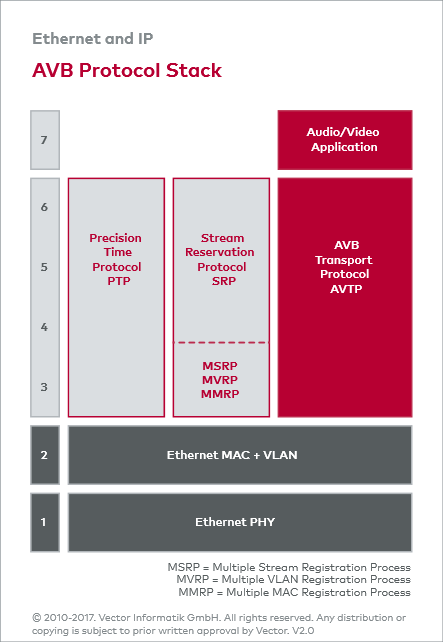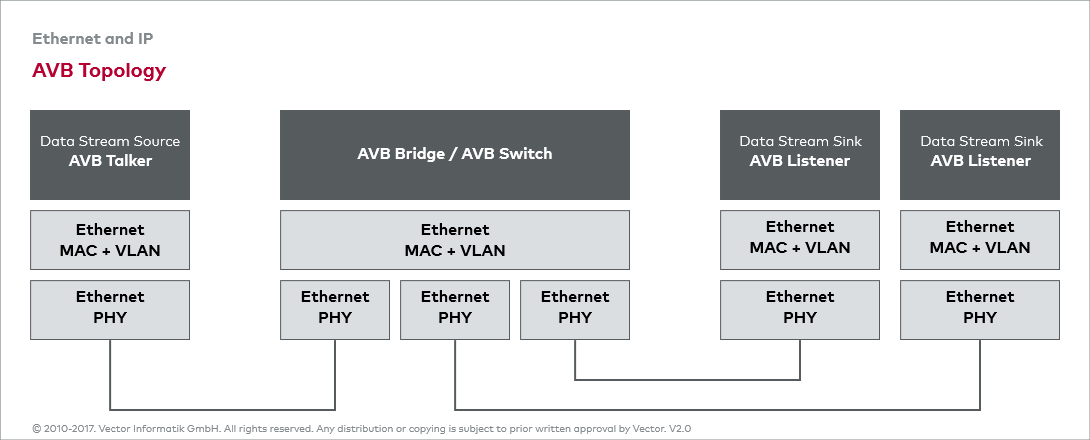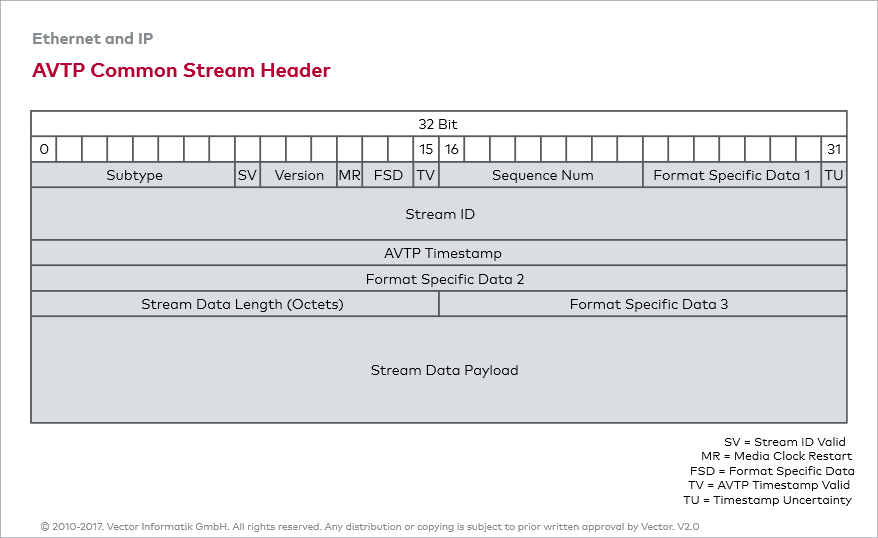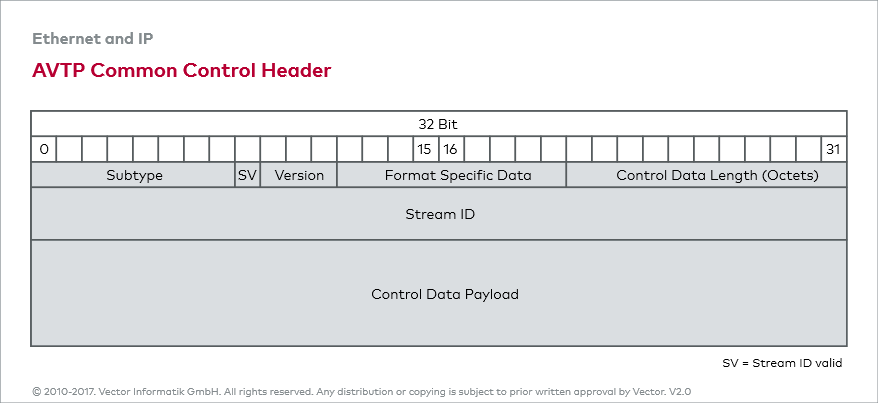AVB/TSN
Background
The Audio Video Bridging Working Group was renamed the Time-Sensitive Networking Working Group by IEEE in 2012. The existing protocol standards continue to be expanded and additional functions are added. AVB/TSN enables low-latency and high-quality transmission of streaming data (e.g., camera data). Because the data are not transported across network boundaries, at least in the automotive version, IP, TCP and UDP can be dispensed with. The AVB/TSN protocols use Ethernet directly.
The AVB/TSN protocols are based on standards that also allow use via IP but are reduced for the reasons given and frequently limited in their dynamic response so that they are ready for operation more quickly in the vehicle. Thus, the dynamic bandwidth reservation with the Stream Reservation Protocol is generally not used in the motor vehicle.
Components
In AVB/TSN, the data source is referred to as the talker and the data sink as the listener. The switches in the form of coupling elements are referred to as bridges, which is not exactly technically precise. Besides the talkers and listeners, the switches must also have AVB/TSN capability because special MAC Multicast addresses are used and a “Forwarding and queuing for time-sensitive networks” system is also in operation there. PTP frames are also changed by the switch.
Streaming data
The Audio Video Transport Protocol (AVTP) transmits the respective data in its payload area. This generally involves video or audio data but possibly also control data. If streaming data (audio/video) are being transmitted, the AVTP header always contains a point in time that lies in the future. In addition, AVTP uses Ethernet frames with VLAN tags so that switches have the opportunity to prioritize and the latency between talker and listener remains less than 2 ms. Another quality demand placed by AVB/TSN is for low latency jitter.
As soon as the future point in time arrives in the listener, the frame is to be delivered by AVTP to the application layer (e.g., speaker). So that this point in time, called the presentation time, actually occurs simultaneously in all received nodes, a highly accurate synchronization of the nodes is necessary. The Precision Time Protocol (PTP) is responsible for this, and the Generalized PTP (gPTP) variant is mostly used.




